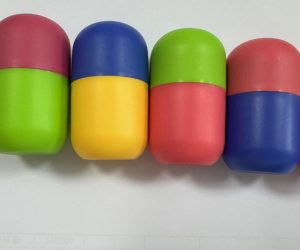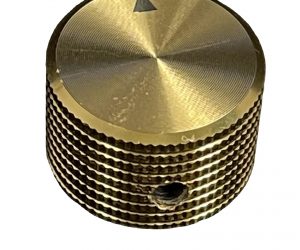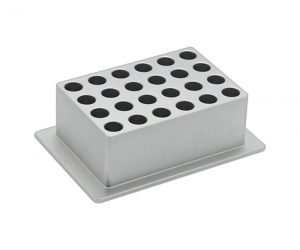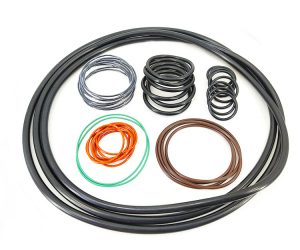the key to thriving in the competitive plastic molding industry lies in a relentless pursuit of innovation and efficiency. Here's an expanded look at how these strategies can be implemented effectively:
- Advanced Mold Design:
- Utilize state-of-the-art CAD/CAM software and simulation tools to optimize mold design for reduced cycle times and minimized material waste. This approach not only enhances part quality but also ensures that the design is manufacturable and cost-effective right from the start.
- High-Quality Materials:
- Automation:
- Implementing automation through CNC machining, EDM (Electrical Discharge Machining), and robotic part handling increases precision, consistency, and speeds up production. Automation mitigates human error, leading to higher reliability and repeatability in mold production.
- Mold Manufacturing Technologies:
- Exploring innovative manufacturing technologies such as additive manufacturing (3D printing) allows for complex mold components to be created quickly and cost-effectively. This technology offers flexibility and speed, making it ideal for rapid prototyping and small-batch production.
- Proper Cooling System:
- An efficient cooling system is vital for achieving uniform cooling and faster cycle times. Proper cooling enhances production efficiency and helps maintain the integrity and performance of the mold during operation.
- Process Optimization:
- Continuous optimization of injection molding process parameters—temperature, pressure, and speed—ensures consistent, high-quality part production. Real-time monitoring and adjustments based on feedback loops further refine the process.
- Mold Maintenance:
- Regular maintenance prevents unexpected failures and ensures optimal performance. Predictive maintenance using sensors and data analytics can predict when maintenance is needed, minimizing downtime.
- Training and Skill Development:
- Investing in employee training enhances expertise in mold production techniques and technologies. A skilled workforce is essential for implementing advanced methodologies and operating sophisticated machinery efficiently.
- Lean Manufacturing:
- Applying lean manufacturing principles eliminates waste, reduces lead times, and improves overall efficiency. Techniques such as 5S (Sort, Set in order, Shine, Standardize, Sustain) and Just-In-Time (JIT) are instrumental in streamlining operations.
- Collaborative Approach:
- Fostering collaboration among mold designers, manufacturers, and injection molding experts fosters innovation and identifies improvement opportunities. Cross-functional teams can share insights and work together towards common goals.
- Quality Control:
- Rigorous quality control processes at every stage ensure compliance with standards. Inspections, testing, and validation procedures help detect issues early, preventing defects from reaching the client.
- Research and Development:
- Investing in R&D paves the way for discovering new materials, technologies, and techniques. Collaborations with universities and research institutions can drive forward-thinking solutions and keep the company at the forefront of technological advancements.
- Continuous Improvement:
- Encouraging a culture of continuous improvement means learning from each project and making incremental advancements. Feedback mechanisms and lessons learned should be systematically documented and applied to future projects.
By integrating these strategies into their operations, plastic mold manufacturers can significantly boost production efficiency, reduce costs, and elevate the overall quality of their products. In an industry characterized by rapid technological advancements and intense competition, staying ahead requires constant innovation and a commitment to refining both technical capabilities and managerial practices.
the mold industry is committed to improving production efficiency, shortening development cycles, improving the technical level of plastic molds, and reducing production costs. So, how to improve the production efficiency and technology of plastic molds?
First of all, in order to improve production efficiency, mold companies can take a series of measures. On the one hand, by introducing advanced production equipment and automation technology, the production process can be automated and intelligent, reducing the time and cost of manual operations. On the other hand, optimize the production process, rationally arrange production plans, avoid waste and stagnation in the production process, and improve production efficiency. In addition, strengthening employee training and management and improving employee skill levels and work efficiency are also important means to improve production efficiency.
Secondly, in order to improve the technical level of plastic molds, mold companies can increase investment in research and development and continuously promote technological innovation. By introducing advanced mold design and manufacturing technology at home and abroad, combined with the actual situation of the company, we carry out technological improvements and innovations. At the same time, we have established cooperative relationships with universities and scientific research institutions to jointly carry out scientific research projects, strengthen technical exchanges and cooperation, and improve the technical level of plastic molds.
In addition, in order to reduce production costs, mold companies can start from many aspects. First, optimize raw material procurement channels, find suppliers with reasonable prices and reliable quality, and reduce raw material costs. Secondly, strengthen equipment maintenance and management, extend the service life of equipment, and reduce the cost of equipment repair and replacement. At the same time, through refined management and lean production, waste and loss during the production process are reduced, resource utilization is improved, and production costs are reduced.
To sum up, in order to improve the production efficiency and technical level of plastic molds and reduce production costs, mold companies need to introduce advanced equipment, optimize production processes, strengthen employee training, increase investment in research and development, and optimize raw material procurement. . Only by continuously improving one's technical level and management level can one remain invincible in the fierce market competition.
1、 Implement concurrent engineering in the whole process
The whole process of concurrent engineering is one of the most effective ways to shorten the development cycle of plastic mold. The so-called concurrent engineering means that all processes and links in the plastic mold development process should be carried out synchronously, in parallel, and in a cross way, so as to avoid serial.
2、 Standardized design and manufacturing
For the standardization of plastic mold design, the first step is to establish a plastic mold design standard database, including the standard parts of individual parts, standard components with assembly structures, mold base structure database and typical plastic mold structure database, which can be used by technicians to design plastic molds, improve the design efficiency and the use rate of plastic mold standard parts, and realize the standardization, serialization and standardization of plastic mold structures, The degree of standardization of plastic mould is more than 70%.
3、 Fine processing is in place at one time
The purpose of fine processing is to greatly reduce bench workers' research and training, so that they can work at one time Reduce the dependence of repeated processing, subsequent compensation, manual trimming and mold quality on bench work skills. The clearance between the upper and lower die edges shall be directly processed in place, and no bench worker is required to open the clearance; The punching punch/die is directly installed without debugging: the high smoothness of the drawing model surface is free of tool connection marks, reducing lapping: the drawing die for the inner panel does not need to remove the tool marks, and does not need to be pushed; Over cutting of concave fillets without back gouging. It is the management direction of modern plastic mold production to realize only assembly without less repair, namely the so-called "direct assembly method", through fine processing and the adoption of high-level standard parts, and then to make the processing benchmark and assembly benchmark of parts consistent.





